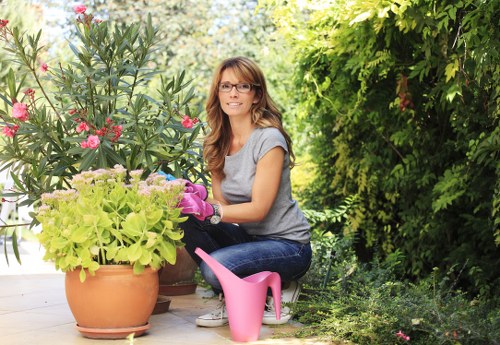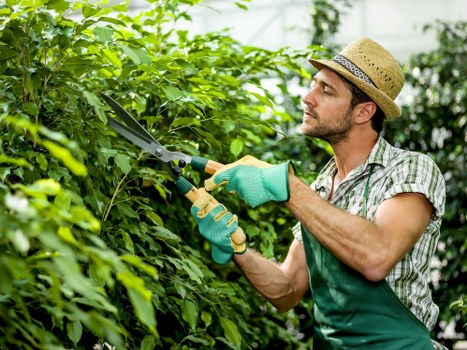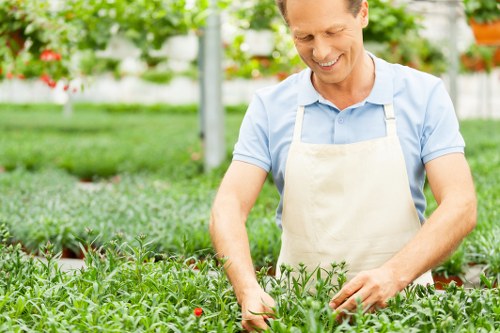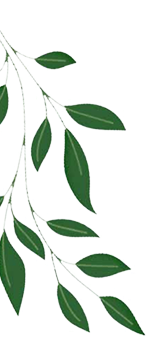Gardeners Leaves Green

Gardening is a rewarding hobby that brings joy and beauty to our surroundings. One of the key elements that determine the success of a garden is the health of the leaves on plants. Green, vibrant leaves are not only aesthetically pleasing but also essential for the plant's growth and survival.
Healthy leaves are the powerhouse of a plant. Through the process of photosynthesis, leaves convert sunlight into energy, enabling plants to grow, produce flowers, and bear fruits. Without green leaves, a plant cannot thrive, making leaf care a top priority for gardeners.
However, maintaining lush green leaves can be challenging. Pests, diseases, improper watering, and nutrient deficiencies can all affect leaf health. Understanding how to recognize and address these issues is crucial for any gardener aiming to cultivate a thriving garden.
Importance of Healthy Leaves in Gardening
Photosynthesis and Leaf Health

Photosynthesis is the fundamental process by which plants produce their own food. Green leaves contain chlorophyll, a pigment that captures sunlight and converts it into chemical energy. This energy is then used to synthesize sugars, which fuel the plant's growth and development.
Healthy leaves maximize the efficiency of photosynthesis. They have a larger surface area and more chlorophyll, allowing them to absorb more sunlight. This results in better energy production, leading to robust plant growth and higher yields in fruit-bearing plants.
Moreover, healthy leaves contribute to the overall health of the garden ecosystem. They provide shade, reduce soil erosion, and support beneficial insects. Maintaining green leaves is therefore not only beneficial for individual plants but also for the garden as a whole.
Signs of Healthy Leaves
Recognizing the signs of healthy leaves is essential for early detection of potential problems. Here are some indicators to look for:
- Color: Leaves should have a consistent, vibrant green color. Any discoloration might indicate nutrient deficiencies or disease.
- Texture: Healthy leaves are generally smooth and firm. Brittle or mushy leaves can be a sign of water stress.
- Growth: Regular growth and the absence of spots or lesions are good signs of healthy leaves.
Monitoring these signs regularly can help gardeners take proactive measures to maintain leaf health.
Common Leaf Problems and Solutions
Yellowing Leaves

Yellowing leaves, also known as chlorosis, can be caused by several factors. Common causes include nutrient deficiencies, particularly nitrogen, overwatering or underwatering, poor drainage, and pest infestations.
To address yellowing leaves, gardeners should first assess the watering schedule. Ensuring plants receive the right amount of water is crucial. Additionally, testing the soil for nutrient deficiencies and amending it with the appropriate fertilizers can help restore the green color.
Natural remedies, such as using compost or organic fertilizers, can also be effective in providing the necessary nutrients. In cases where pests are the culprit, introducing natural predators or using eco-friendly pesticides can mitigate the issue.
Leaf Curl and Wilting
Leaf curl and wilting are common symptoms of stress in plants. These issues can result from a variety of factors, including extreme temperatures, drought, excessive moisture, or pest damage.
To prevent leaf curl and wilting, gardeners should ensure that plants are planted in suitable locations with proper sunlight and protection from harsh weather conditions. Implementing a consistent watering routine and using mulch to retain soil moisture can also help maintain leaf integrity.
If pests are causing the damage, identifying and managing them promptly is essential. Organic solutions, such as neem oil or insecticidal soap, can effectively control pests without harming the plants.
Pest Infestations
Pests like aphids, mites, and caterpillars can wreak havoc on plant leaves. These pests feed on the sap or tissues of leaves, leading to reduced photosynthetic activity and overall plant health.
Managing pest infestations requires a combination of prevention and targeted treatments. Regularly inspecting plants for signs of pests can help catch infestations early. Introducing beneficial insects, such as ladybugs and lacewings, can naturally control pest populations.
For severe infestations, using organic pesticides or homemade remedies like a mix of soap and water can effectively eliminate pests without harming beneficial insects.
Best Practices for Maintaining Leaf Health
Proper Watering Techniques

Watering is a critical aspect of leaf care. Both overwatering and underwatering can lead to leaf problems. The key is to provide a consistent amount of water that meets the plant's needs.
Using drip irrigation or soaker hoses can ensure that plants receive water directly at the roots, reducing water wastage and preventing leaf diseases caused by excess moisture.
It's also important to water in the early morning or late evening to minimize evaporation and allow leaves to dry before nightfall, reducing the risk of fungal infections.
Nutrient Management
Supplying plants with the right nutrients is essential for healthy leaf growth. Nitrogen, phosphorus, and potassium are the primary nutrients that support leaf health.
Regularly testing the soil can help determine nutrient levels and guide fertilization practices. Using a balanced fertilizer or applying organic matter like compost can replenish soil nutrients and promote vigorous leaf development.
Additionally, incorporating micronutrients such as magnesium and iron can address specific deficiencies that may cause leaf discoloration or other issues.
Pruning and Leaf Care
Pruning is an important practice that helps maintain leaf health by removing dead or diseased leaves. This not only improves the plant's appearance but also enhances air circulation, reducing the risk of fungal diseases.
When pruning, use clean and sharp tools to make precise cuts. Avoid removing more than 20-30% of the plant at once to prevent undue stress.
Regularly inspecting plants and promptly removing damaged leaves can ensure that the plant remains healthy and productive throughout the growing season.
Seasonal Leaf Care Tips
Spring Leaf Care

Spring is a time of renewal, and it's essential to prepare plants for the upcoming growing season. Start by cleaning up any debris from the winter, as fallen leaves and dead branches can harbor pests and diseases.
Applying a balanced fertilizer in early spring can give plants the nutrients they need to produce healthy, green leaves. Additionally, pruning back any damaged or overgrown branches can encourage new growth.
Mulching around the base of plants helps retain soil moisture and suppress weeds, providing an optimal environment for leaf development.
Summer Leaf Maintenance
During the summer months, leaves are exposed to intense sunlight and heat, making it crucial to implement proper watering and shading techniques.
Regular watering, especially during dry spells, ensures that leaves remain hydrated and continue to perform photosynthesis efficiently. Installing shade cloths or strategically placing plants can protect leaves from sunburn and reduce water loss through evaporation.
Monitoring for pests and diseases is also important in summer, as warm and humid conditions can exacerbate these issues. Promptly addressing any signs of trouble can keep leaves healthy and vibrant.
Autumn Leaf Preparation
As temperatures begin to drop, it's important to prepare plants for the upcoming cold months. Start by gradually reducing watering to help plants enter a dormant state.
Removing fallen leaves from the garden prevents the buildup of mold and pests that can overwinter and harm plants in the spring.
Applying a layer of mulch around plants can insulate the roots and protect them from freezing temperatures, ensuring that leaves remain healthy and plants emerge strong in the next growing season.
Winter Leaf Protection
In regions with harsh winters, protecting leaves from frost and snow is essential. Covering plants with burlap or frost blankets can shield leaves from extreme cold and prevent damage.
Using anti-desiccant sprays can help retain moisture in leaves, reducing the risk of desiccation caused by winter winds.
Regularly inspecting plants during winter ensures that any issues, such as breakage from heavy snow, are addressed promptly, maintaining the overall health of the garden.
Leaves Green in Your Local Area
Emerald Park
Emerald Park, located just 5 miles from Leaves Green, offers a lush environment perfect for gardeners. With its rich soil and abundant rainfall, it's an ideal spot for growing a variety of plants with vibrant green leaves.
Sunnybrook Gardens
Sunnybrook Gardens is another nearby area, situated 7 miles away from Leaves Green. Known for its sunny climate, gardeners here can enjoy extended growing seasons and produce healthy, green foliage throughout the year.
Maplewood Meadows
Maplewood Meadows, 10 miles from Leaves Green, boasts fertile land and a supportive community of gardeners. The region's diverse plant life and green landscapes make it a favorite among those looking to maintain lush gardens.
Willow Creek
Willow Creek, located 8 miles from Leaves Green, is renowned for its well-maintained public gardens and extensive network of gardening clubs. These resources provide valuable support for gardeners aiming to keep their leaves green and healthy.
Brookside Estates
Brookside Estates, 12 miles from Leaves Green, offers a variety of gardening workshops and seminars focused on leaf health and plant care. These educational opportunities help gardeners enhance their skills and knowledge.
Greenfield Gardens
Greenfield Gardens, 9 miles away, is famous for its sustainable gardening practices. Gardeners here emphasize organic methods and natural pest control to maintain green, vibrant leaves.
Lakeside Park
Lakeside Park, situated 6 miles from Leaves Green, provides ample space for gardeners to experiment with different plant species, ensuring a diverse and green landscape year-round.
Rosewood Trails
Rosewood Trails, 11 miles away, is known for its beautiful rose gardens and leafy landscapes. The area's microclimate supports the growth of lush green leaves, making it a paradise for gardeners.
Sunnyvale Heights
Sunnyvale Heights, 4 miles from Leaves Green, benefits from a temperate climate that fosters healthy leaf growth. Gardeners in this area enjoy a variety of plants with consistently green foliage.
Oak Grove
Oak Grove, 13 miles away, features extensive oak forests and community gardens. The area's rich biodiversity supports robust leaf health across its plant species.
Frequently Asked Questions
- What causes leaves to lose their green color?
Leaves can lose their green color due to nutrient deficiencies, particularly nitrogen, pest infestations, overwatering or underwatering, and exposure to extreme temperatures.
- How can I prevent leaf diseases in my garden?
Preventing leaf diseases involves regular monitoring of plants, ensuring proper watering practices, providing adequate air circulation, and removing any diseased leaves promptly. Using disease-resistant plant varieties can also help.
- What are the best natural remedies for pest control?
Natural remedies include introducing beneficial insects like ladybugs and lacewings, using neem oil or insecticidal soap, and applying homemade sprays made from garlic or pepper.
- How often should I fertilize my plants for healthy leaves?
The frequency of fertilization depends on the plant species and soil conditions. Generally, fertilizing once a month during the growing season with a balanced fertilizer is recommended.
- Can pruning improve leaf health?
Yes, pruning removes dead or diseased leaves, enhances air circulation, and directs the plant's energy towards healthy growth, thereby improving overall leaf health.
